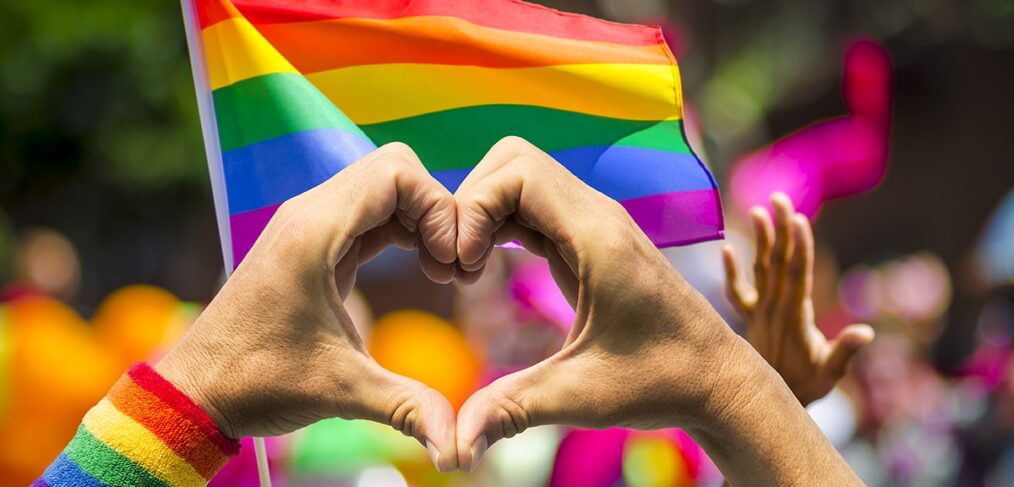
Understanding the LGBTQ+ Community
In 1971, the “We Demand Rally” was held on Parliament Hill, representing Canada’s first public protest for the Gay community. The rally played an important role in the history of this community seeking equality rights. Fast forward to 1981, and the City of Toronto celebrated its first pride week. Twenty-five years later, Toronto’s newly appointed police chief made history by marching in the parade. In 2019, it was estimated the Toronto pride festival contributed $374M to Ontario’s GDP and generated $149M in combined tax revenues.[i] Globally, their estimated purchasing power is $3.7 Trillion.[ii]
The term LGBTQ+ stands for Lesbian, Gay, Bisexual, Transgender, Queer. Lately, IA has been added to this community, Intersex, and Asexual. In 2018, close to 4% of Canadians identified as LQBTQ+ with this group representing 4.4% of Canada’s total fast-moving consumer goods (FMCG) purchases.[iii] Consumers under the age of 25 account for a disproportionately large share of this community, with those between the ages of 15-24 representing 30% of them.[iv] In a 2021 survey, 17% of Millennials identified themselves to be part of the LGBTQ+ community.[v]
Why should brands focus on this segment?
As noted by Consultant Hannah Libot, Numerator, “With the rise in social movements in recent years, consumers are demanding brands play a larger role in acknowledging and supporting social justice initiatives. This is especially true of younger consumers, with Gen Z shoppers expecting brands to speak up and take more responsibility on these issues.” “This is important because Gen Z shoppers are starting to mature into the marketplace and make those choices on the brands and the stores they want to buy at.”[vi] As part of Numerators survey of the LGBTQ+ consumers in Canada, they revealed:
- LGBTQ+ shoppers are young, value-driven, and trend-seeking. Most importantly, they make up a large part of the population. (Note: 7.6% of Numerator’s panelists identified as LGBTQ+)
- The LGBTQ+ shopper is educated, from a smaller household, and more likely to live in a larger city.
- The LGBTQ+ shopper is committed to living a healthy, sustainable life and is more engaged online. However, in-store is still a viable touchpoint as these shoppers like to browse displays, and smaller-format offerings can cater to their impulse buying behaviours.
- 72% of respondents believe brands should do more to support this community outside of Pride. By providing real, authentic support all year long, brands will be more likely to win LGBTQ+ shoppers.[vii]
Impact on Consumer Spending
When it comes to the FMCG sector, grocery stores come out on top with LGBTQ+ consumers spending more than half (53%) of their dollars there. Digging deeper it is revealed this community does not spend nearly as much when compared to the national average on desserts (-24%), bakery (-18), snack foods (-16%), baking needs (-15%), and meat and seafood (-13%).[viii] Several studies over the last decade have found the LGBTQ+ community to be significantly more likely to be involved with environmental activism than the rest of the population.
Brand loyalty is extremely important to this group. According to a study undertaken by Community Marketing Inc & Harris Interactive, Brand loyalty within this community is especially high. They revealed:
- 55% will choose to do business with companies that are committed to the diversity/equal treatment of the LGBTQ+ community.
- 70% stated they would pay a premium for a product from a company that supports the LGBTQ+ community.
- 78% would switch to brands that are known to be LGBTQ+ friendly.[ix]
A 2019 study undertaken by Inclusive Marketing also revealed:
- 67% of the LGBTQ+ consumers are more likely to feel positively towards brands with advertising that demonstrates that men and women have the same capabilities and roles.[x]
Mental health is another area in which brands must focus on with this group. A recent study from The Trevor Project revealed in the past 12 months:
- 47% of LGBTQ+ youth have received professional mental healthcare.
- 60% of LGBTQ+ youth who have received professional mental healthcare have seriously considered suicide. [xi]
To best serve the LGBTQ+ consumer, brands need to understand them. In part, 1. Be Inclusive, 2. Be Supportive, and 3. Be Caring. This would involve:
- Including this community in regular advertising.
- Focus on the topics related to a healthy lifestyle and mental health.
- Be vocal and actionable in showing support for them.
- Make a special effort to build the image of a 360-degree company.
Brands that fail to be inclusive to the LGBTQ+ community will be the ones to feel the wrath of the Millennials, and Gen Z and their associated buying power and level of influence. This segment is known to be seen as more socially aware, and requesting diversity, inclusivity, and equality.
[i] Pride Toronto, Economic Impact Report, 2019, www.pridetoronto.com
[ii] The LGBTQ+ Community Has $3.7Trillion in Purchasing Power; Here’s How We Wany You to Sell to Us, www.entrpreneur.com, June 2019
[iii] Canada’s LGBTQ Consumers Flex Their Spending Power, www.inmagazine.ca, July 2018
[iv] Canada’s LGBTQ Population Now 1 Million – But Hate Crimes are Rising Too: Statistic Canada, www.cbc.ca
[v] The Data That Shows Supporting LGBTQ+ Will be Vital to Reaching Gen Z, www.ypulse.com, June 2021
[vi] Serving the LGBTQIA+ Shopper, www.canadiangrocer.com., November 2021
[vii] Serving the LGBTQIA+ Shopper, www.canadiangrocer.com., November 2021
[viii] Canada’s LGBTQ Consumers Flex Their Spending Power, www.inmagazine.ca, July 2018
[ix] Why is Brand Loyalty So Important in the LGBT Community? www.medium.com, January 2017
[x] https://www.thinkwithgoogle.com/future-of-marketing/management-and-culture/diversity-and-inclusion/lgbtq-brand-loyalty-statistics/
[xi] How Brands Can Appeal to the LGBTQ Community Through an Intersectional Lens, www.forbes.com, July 2020





